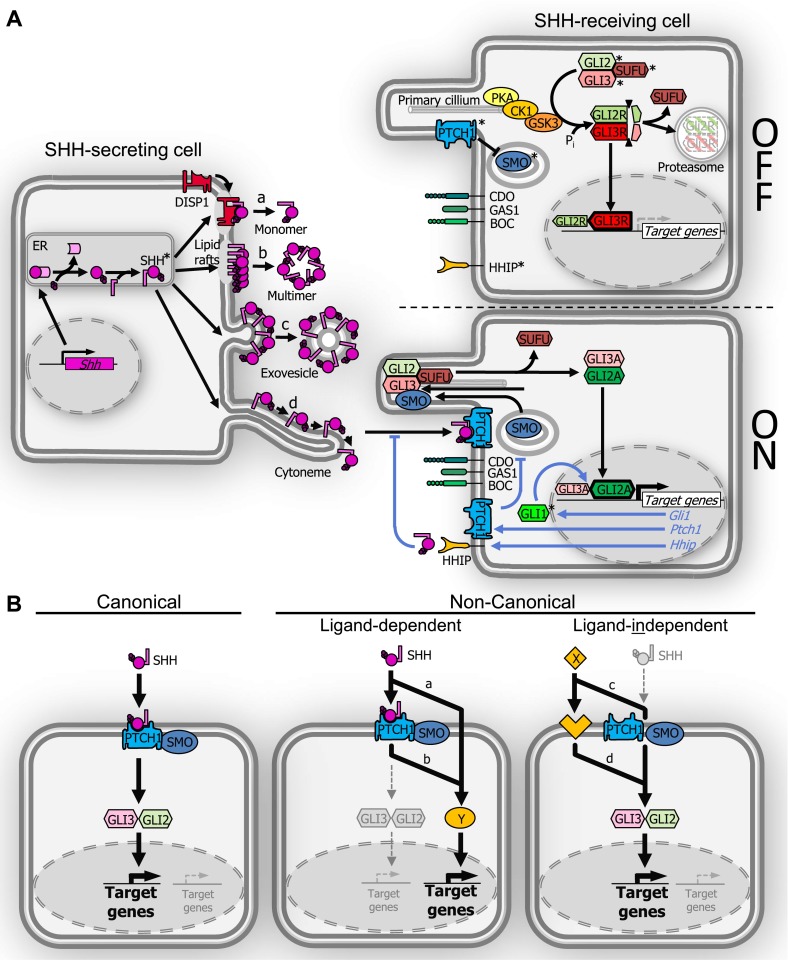Figure 1.
Schematic depiction of sonic hedgehog (SHH) synthesis, secretion, and signaling. Pathway molecules with described roles in lung development and/or disease are marked (*). (A) In the SHH-secreting cell, SHH-precursor protein undergoes autoproteolytic cleavage and C-terminal addition of a cholesterol moiety followed by N-terminal palmitoylation. Lipidated SHH is able to translocate to lipid rafts in the outer cell membrane. Several modes of secretion have been postulated: (a) a monomeric form requiring DISP1, (b) a multimeric form, (c) in exovesicles or lipoproteins, and (d) along tentacle-like cell cytonemes. The HH signal-receiving cell is shown without (OFF) or with (ON) pathway activation. In the OFF-state, Patched1 (PTCH1) receptor sequesters SMO at the base of the primary cilium. In the absence of SMO activation, GLI2/GLI3 are phosphorylated through the PKA/CK1/GSK3 complex, followed by proteolytic cleavage into their repressor forms GLI2R/GLI3R, which dissociate from Suppressor of Fused (SUFU) and either translocate to the nucleus to repress target gene expression (mainly through GLI3R) or undergo proteasomal degradation. SHH binding to PTCH1 (ON-state) removes sequestration of SMO, which then moves into the primary cilium to induce conversion of GLI2/GLI3 to their activator forms Gli2A/Gli3A. Gli2A/Gli3A can then dissociate from SUFU and translocate to the nucleus to activate target gene transcription (mainly through GLI2A). Direct transcriptional targets (italic blue font and arrows) can provide either a positive (GLI1) or a negative (PTCH1, HHIP) feedback loop for HH signaling. Further modulation of HH signal transduction is provided by cell surface “co-receptors” CAM-regulated by oncogenes (CDO), brother of CDO (BOC), and growth arrest–specific gen1 (GAS1). (B) Canonical and noncanonical HH signaling. Canonical pathway activation (left panel) involves SHH ligand, cell membrane molecules PTCH1/SMO, and GLI transcription factors. In ligand-dependent, noncanonical signaling (middle panel), SHH activates target genes using an alternate pathway Y with (a) or without (b) involvement of PTCH1 and/or SMO. In HH ligand–independent, noncanonical signaling (right panel), alternate X-ligand–mediated pathways activate GLI-mediated target transcription with (c) or without (d) involvement of PTCH1 and/or SMO.

